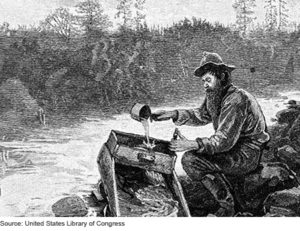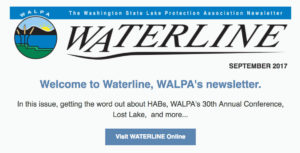Other Mining Fights and Activist Groups
Read more about campaigns around the country to protect communities and ecosystems from the negative impacts of mining!
Organizations and Grassroots Alliances
- Alliance for Appalachia
- Arizona Mining Reform Coalition
- Cascade Forest Conservancy
- Center for Coalfield Justice
- Coal River Mountain Watch
- Earthworks
- Ethical Metalsmiths
- Friends of the Boundary Waters Wilderness
- Kanawha Forest Coalition
- Upper Peninsula Environmental Coalition – Mining Action Group
- Western Mining Action Network
In the News
- “Court rules against Klukwan, conservation groups in BLM permitting lawsuit,” KNBA | March 22, 2019
- “Northwest fishing fleet renews fight against proposed mine in Alaska’s Bristol Bay,” KNBA | March 22, 2019
- “Opponents of RDU quarry sue to stop mining work from getting started,” Raleigh News & Observer | March 12, 2019
- “Community and Conservation Groups To Defend Clean Water Against Coal Industry Attack,” Earthjustice | January 18, 2017
- “Coalition redoubles efforts to stop proposed gold mines bordering Yellowstone,” ABC Fox Montana | August 24, 2016
- “Appeals Court Upholds EPA Veto of Spruce No. 1 Mountaintop Removal Mine Permit,” Earthjustice | July 19, 2016
About the Mining Act of 1872

Following the boom of mineral discoveries in the west such as the California Gold Rush, the General Mining Act of 1872 was passed by President Ulysses S. Grant to promote settlement and natural resource development in the west. Despite outdated terms, such as charging claimants a “mineral patent” to mine land at no more than $5 per acre, this law continues to govern mineral exploration and extraction in the U.S. today.
SEC. 2319. All valuable mineral deposits in lands belonging to the United States, both surveyed and unsurveyed, are hereby declared to be free and open to exploration and purchase… Click here for the full text of the 1872 Mining Act
Articles and Reports about the Mining Act
- “1872 Mining Law 101,” Earthworks
- “The General Mining Act of 1872 has left a legacy of riches and ruin,” Seattle Post-Intelligencer
- “The Mining Law of 1872: Digging a Little Deeper,” Property and Environment Research Center
- “1872 Mining Law Is Obsolete and in Need of Reform,” Huffington Post
Recommended Actions for Management Plans
OHA recommends that Ecology require Crown to take the following actions that would help clarify monitoring and closure requirements and lead to the eventual restoration of mine site water quality:
Add monitoring wells to the underground mine: There is currently only one monitoring point in each of the two zones to analyze water quality changes in the Buckhorn underground mine during closure. More monitoring is needed to understand how recirculation is affecting mine water quality, especially in a fractured bedrock setting. Water quality monitoring wells should be added to the more distant portions of the underground mine (not along the preferential pathway) to evaluate the effectiveness of recirculation during closure.
Recommended Actions for Permit Violations
Effectiveness of measures taken: Ecology should insist that Crown provide the agency with a critical investigation into the effectiveness of each mitigation measure it has implemented as part of the settlement of the July 2012 penalty for water quality violations. This evaluation was required by a July 19, 2016 administrative order but was never produced by the company. Evaluations are necessary to better understand the successes and failures of past actions and to help guide future actions. Ecology must make sure its role as regulator is not undermined by the company ignoring its authority with no consequences.
Communication about Violations: Each month, Crown/Kinross Discharge Monitoring Reports contain numerous violations. OHA recommends that Ecology inform the mining company that the violation(s) can be subject to significant penalties, and that the agency order corrective action. Ecology should administer its regulatory responsibility to ensure that Crown/Kinross follows through on orders and commitments to contain mine contaminants.
World Wetlands Day 2019
Wetlands around the world protect communities while helping fight climate change

As the world grapples with climate change, those commemorating World Wetlands Day Feb. 2 are highlighting the importance of restoring, conserving, and wisely using wetlands because they can help reduce floods, relieve droughts, and buffer coastlines from extreme weather.
In the state of Washington, we work every day to protect and manage wetlands. The environmental and economic benefits they provide nature, our communities, and way of life are immeasurable…
To help celebrate World Wetlands Day, the WA State Department of Ecology selected the Triple Creek project to feature on their blog. Click here to read the full article.
Landowners Support Beavers for Restoration

In 1980, a group of like-minded individuals purchased over 500 acres of land along Myers Creek north of Chesaw, on a site now known as Triple Creek. They formed an intentional community based on simple living and sustainable paths for securing food and shelter. Several households now live on this Okanogan Highlands landscape of forests, meadows, wetlands, and riparian areas. A primary goal of the community is improving and restoring wildlife habitat for native species. Members have developed a forest management plan, rehabilitated overgrazed pastures, and reduced noxious weeds, thus reestablishing native plants. By engaging with local non-profits and agencies for wetland restoration, the community is creating a legacy to benefit future generations…
Read more about the role of the land stewards and the development of this collaboration in this 2015 IRIS (Initiative for Rural Innovation & Stewardship) Success Supplement excerpt.
Wetland Protection in Upper Wauconda

In November 2013, OHA approved an application for reimbursement for Wauconda landowner, Lee Johnson. Lee sought reimbursement for expenses for fences to protect a unique and exceptional wetland that he recently purchased.
Having lived adjacent to the wetland for over 30 years, Lee has built and maintained a fence that protects this resource, long before he actually purchased the wetland.
The protected area includes approximately 25 acres of wetland and forest fringe, laying north of Bunch Road at 4,000 feet elevation.
OHA’s Recommendations for Buckhorn Mine Plans
Note: This text still needs to be edited (See Google Drive)
OHA recommends that Ecology require Crown to take the following actions that would help clarify monitoring and closure requirements and lead to the eventual restoration of mine site water quality:
- Add monitoring wells to the underground mine. One monitoring point to measure changes in two zones of the Buckhorn underground mine during closure is insufficient to understand how recirculation is affecting mine water quality, especially in a fractured bedrock setting. Water quality monitoring wells should be added to the distal portions of the underground mine (not along the preferential pathway) to evaluate the effectiveness of recirculation during closure.
- Modify the HCP. A modified HCP should include the issues discussed in Ecology’s approval letter, especially a requirement to have all monitoring locations on the site meet applicable permit limits for five freshets after recirculation, dewatering, and treatment have stopped. During this time, the treatment plant, dewatering, and recirculation should be able to be restarted if permit limits are not met. The HCP should clarify that all monitoring locations on the site should meet permit limits by the end of closure, including those inside the capture zone.
- Require a closure AMP. A separate closure AMP should be required to address changes in water quality, stream flows, and groundwater elevations during closure and post-closure. The closure AMP should include monitoring locations and criteria, trigger levels, mitigation measures to be taken, responsibilities, and evaluation of mitigation effectiveness. The closure AMP should also include contingencies that expand the time period and potentially restart water treatment if water quality degrades during the five-year period of the closure phase after treatment has ceased and during the ten-year period of post closure phase. The trigger for adaptive management action should be a comparison to permit limits rather than historical concentrations or trends. Finally, Ecology should require that all water on the site, including areas inside the former capture zone, meets NPDES permit limits at the end of closure.
- Require a closure HMP. A Hydrologic Monitoring Plan is needed for closure. Currently none exists. The closure HMP should include descriptions of hydrologic and water quality monitoring, including parameters, frequency, and locations, during closure and post-closure periods. A decrease in frequency between Phases 1 and 2 of closure is not warranted.
- Require a map showing underground workings, wells, and flow directions during closure: Ecology should require Crown/Kinross to create a 3D representation showing the location of the recirculation inflow pipe and outflow well, the sampling location for the Gold Bowl sump, and the remainder of the Gold Bowl workings. The location of the inflow pipe and outflow well for the Southwest Zone and the location of the Southwest Zone sump should also be depicted in a 3D graphic. Expected flow directions in the underground mine with and without pumping should also be included. And add hydrologic plug.

